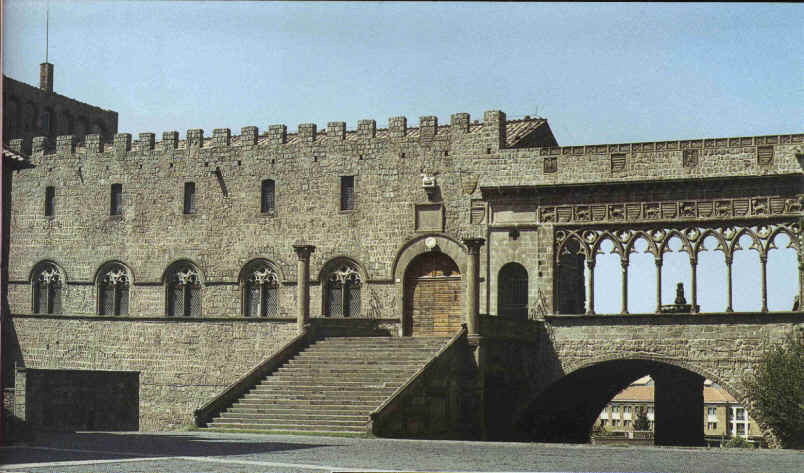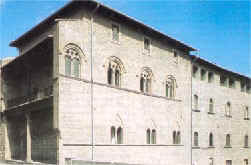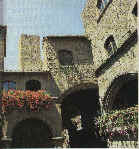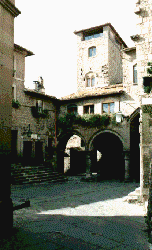|
|
VITERBO
Viterbo is known as ‘the city of popes’. The town’s history is closely related to that of the Roman Catholic Church, inasmuch as Viterbo became the official seat of the papal court in the second half of the 13th century. Nonetheless, the origins of the city go much further back in time. In the 7th century BC, a small Etruscan hamlet was built on the top of San Lorenzo hill. After the Roman conquest (4-3rd centuries BC), the little village was destroyed, and a new Roman colony (Sorrina Nova) was founded on the Cassia road, not far from the ancient Etruscan site. In the early Middle Ages (8th century AD), a fortified castle was built on San Lorenzo hill, in the same place where the Etruscan town was. New neighbourhoods formed around the castle between the 10th and the 11th centuries, so that the town became much bigger and more powerful. As time went by, many people from the north of Italy and from Tuscany made Viterbo their home. Before the end of the 11th century, the town became an independent Commune and reached the top of its power in the 13th century. The most important historical buildings were constructed in this period. The best known sight is, perhaps, the Papal Palace. Built between 1255 and 1267 for the popes, this building is a fine example of Gothic architecture with its wonderful loggia, made of seven interlaced arches, and its two-light mullioned windows. Also interesting is the Cathedral of San Lorenzo, built in the 12th century and restored after the Second World War. In any case, the most charming part of the town is the Medieval Quarter of San Pellegrino. The layout of this old neighbourhood (11th-13th centuries) has remained intact over the centuries. Strolling through its small lanes, you can feel the glorious past of the ancient town is still alive. A walk through the many nooks and crannies of San Pellegrino is undoubtedly a wonderful experience, and the natural charm of this neighbourhood is enhanced by its many antique shops, workshops and old houses. Another important historical place is Piazza del Plebiscito (Piazza del Comune) with its three major public buildings, among which the Palazzo dei Priori (15th-16th centuries) stands out for its fine architecture. Inside the palazzo, there are some rooms with frescoes from the 16th-18th centuries, the most gorgeous of which is the Sala Regia. Of course, these are the most remarkable sights, but there are many more things to be seen in Viterbo. Almost all the main squares are embellished by fine medieval and Renaissance fountains, and several churches bear witness to the religious faith of the city. Among them, the church of Santa Rosa is well worth a mention here because of a fascinating tradition, which began in the heart of the Middle Ages. The church, in fact, holds the body of a young girl, Santa Rosa, who lived in Viterbo and died at the age of 18. Every year, on the night of September 3rd, a 30 m- high tower (the Macchina of Santa Rosa) is carried in procession by a hundred men (the facchini) through the streets of the historical centre, in order to pay homage to the saint. In the heart of San Pellegrino there is also a little museum with objects related to the tradition of Santa Rosa. Viterbo’s most interesting museums are the Etruscan National Museum (Rocca Albornoz) with finds from Ferento, Acquarossa and Musarna; the Civic Museum with an Etruscan-Roman section and a collection of paintings (among which are two 16th century masterpieces by Sebastiano del Piombo, The Pietà and the Flagellazione di Cristo); the Museum of medieval and Renaissance Ceramics and the Museo Diocesano del Colle del Duomo with a collection of Etruscan finds, paintings, Roman marbles and religious objects.
Testo: A.G.Tur. di Viterbo Fonte dati e immagini Amm.ne Prov. & APT di Viterbo |
|||||||||||||||||||||||||||||||||



